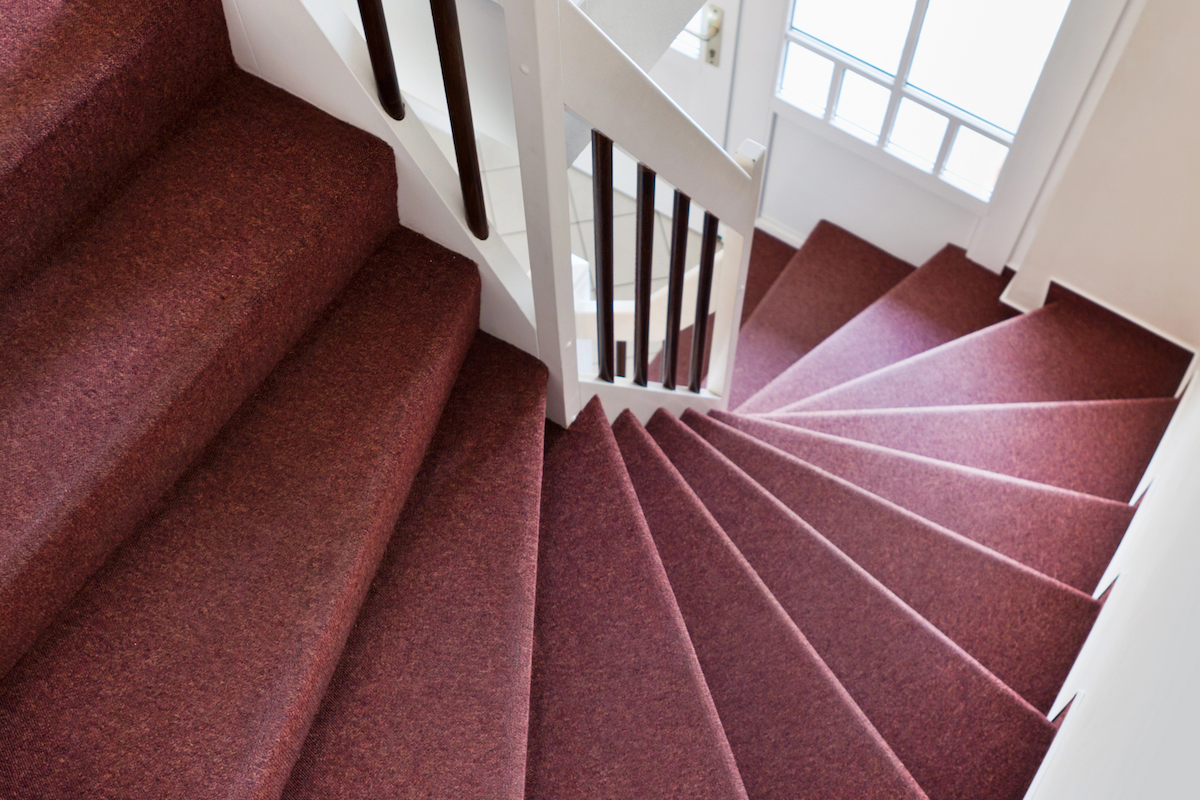We may earn revenue from the products available on this page and participate in affiliate programs. Learn More ›
A staircase can be a showcase for a home’s entry or living area, but it’s also a high-traffic, potentially unsafe zone. Carpeted stairs need to withstand years of foot traffic and the cleaning that comes with keeping the color looking like new.
Although some people choose hardwood or other hard surfaces for stairs, carpet remains popular. “With today’s fibers … the question becomes one of preference instead of fitness,” says Paul Carter, Executive Vice President of Strategic Initiatives at Empire Today. Choosing the best carpet for stairs means careful contemplation about material, construction, style, density, thickness, and other factors.
Should You Carpet Your Stairs?
Although not every homeowner likes the look of carpet on stairs, carpeted stairs is generally a wiser choice than uncarpeted stairs for seniors or families with children. If a family member falls, carpet is a softer surface on which to land. Carpet also is warmer and more comfortable to walk on, and the combination of the carpet fibers and padding help reduce noise from constant foot traffic. Carpet’s best selling point from a safety perspective is that it’s less slippery than wood.
Carpeting stairs does have its drawbacks, too. Although carpet can hide the imperfections in the wood stairs beneath it, the installation process requires plenty of glue, staples, or other wires and objects that can damage the wood below. If you ever decide to remove the carpet later, you might be on the hook for refinishing or repairing the stair wood.
Carpet also is harder to keep clean than hard surfaces are. “As you might imagine, the ‘nose’ of the stair will take the most abuse over time,” says Carter. He recommends “regular vacuuming to remove soil, and stand up the fibers.”

Carpet, hardwood, vinyl, and tile flooring.
Bob Vila has partnered with Empire Today to help you easily get beautiful new floors at a great price. Free In-Home EstimatesChoosing the Right Carpet for Your Stairs
Shopping for the best carpeting for stairs in your home is not the time to cut corners. With a narrow area on which to step and one path you can take whether it’s going up or coming down, stair carpeting takes more wear than does carpeting just about anywhere else in the home. Carter’s best advice? “Choose low- to medium-pile heights from reliable suppliers.” Thickness, stain resistance, and a carpet’s style are additional considerations.
Material
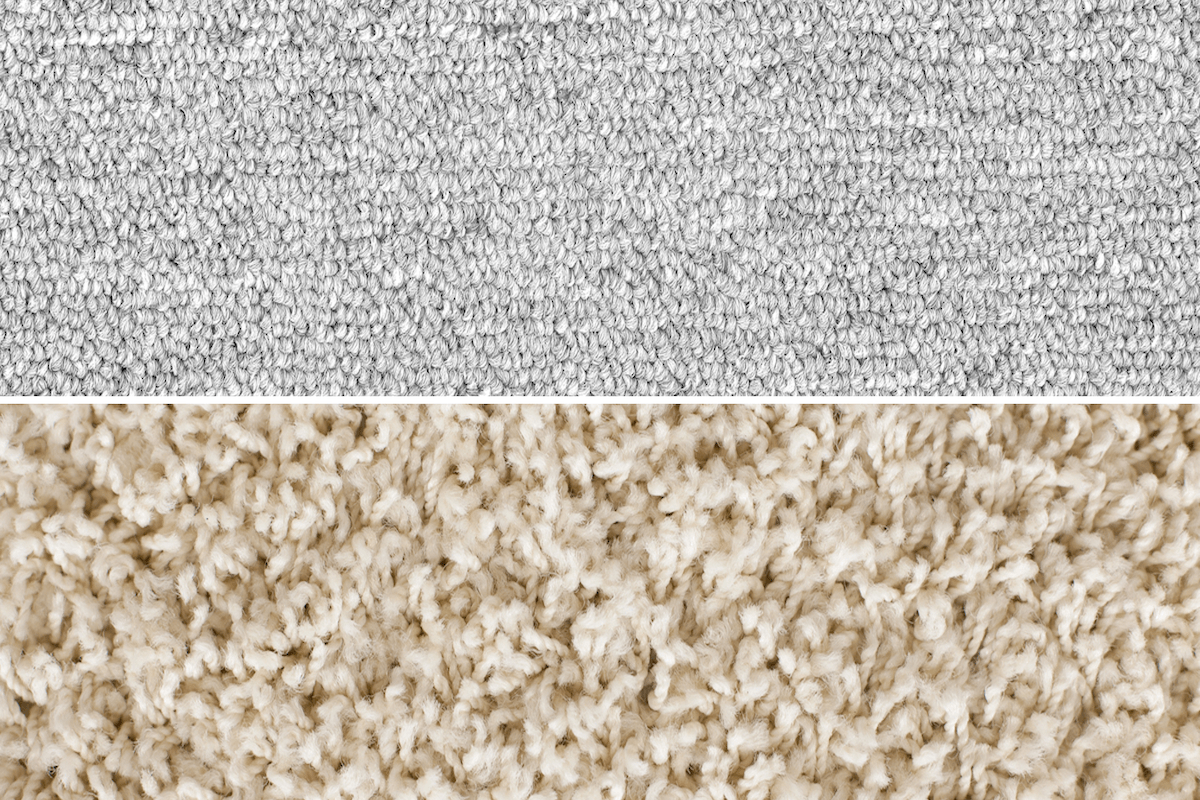
Though carpet color and style are important, durability is paramount. Synthetic fibers such as polyester blends and nylon are the most common materials chosen. They’re durable and tend to cost less than natural fiber options. On the other hand, wool is thick and tough, and can outlast synthetics by 10 years or more. Fibers also affect how a carpet feels underfoot and its texture.
Pile Type
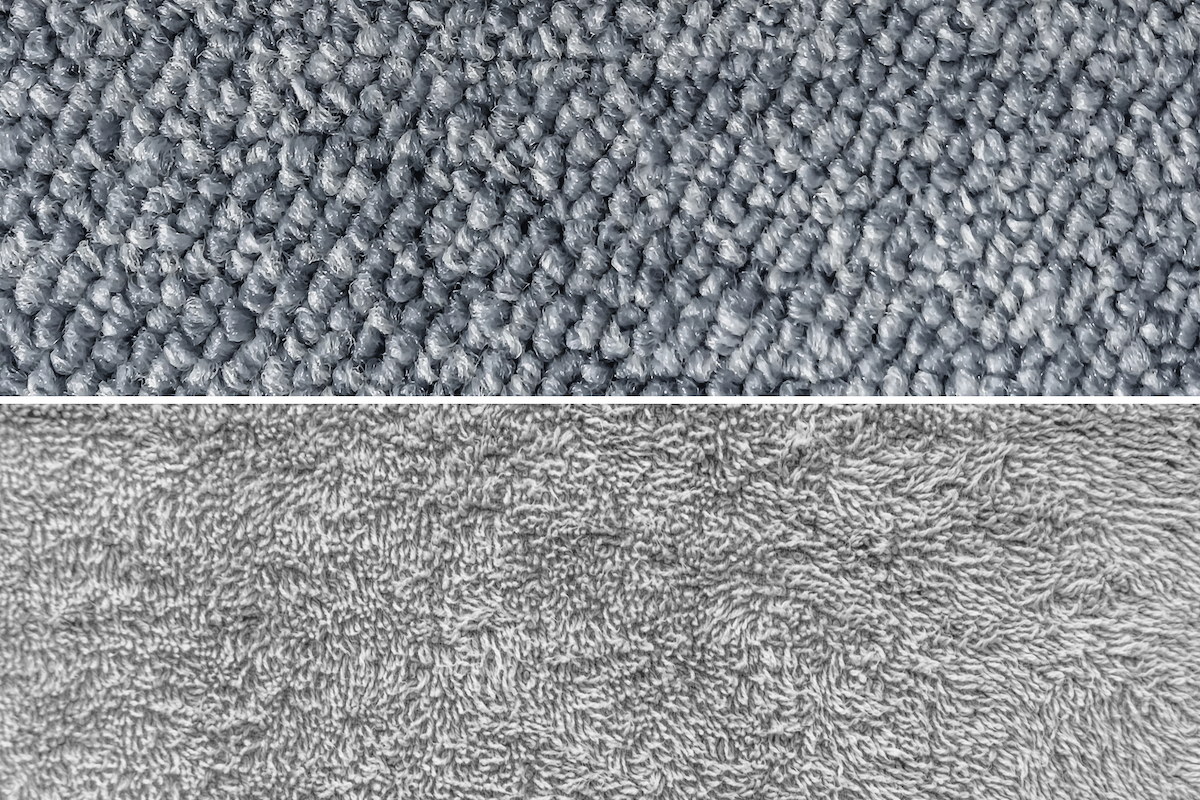
Pile refers to the shape, length, and density of the fiber woven into the carpet, and there are two major types:
- Loop pile: The loops of fiber in this type remain uncut, forming actual loops of varying length and density. This makes them highly durable in high-traffic areas. Some loop piles are of uniform height for a uniform surface, and others have multiple heights of loops, which adds interest and texture. Berber is an example of a dense, tight-looped carpet.
- Cut pile: This type of pile features upright fibers that are cut off like a grass lawn. Cut-loop carpets are soft and plush; in fact, if you see a “plush” label on a carpet product, it’s likely a high-quality cut pile. Saxony and frieze types have twisted fibers to add to durability or texture.
According to Carter, cut-pile is best for wear from pets and kids. “There are no loops remaining in the carpet to catch on claws,” he says. Loop pile, however, is more resilient for high traffic; opt for a high-quality dense loop if you prefer this type.
Pile Height
Pile height, or thickness, matters for stair carpeting. “It’s important to choose low- to medium-pile heights” for this zone of the home, says Carter, who recommends a pile of ½ inch or less. Thick carpeting on stairs creates a tripping or slipping risk on each stair’s nose. Finally, Carter advises, shop for stair carpets made by reputable manufacturers that consist of top-quality yarn.
Pile Density
Carpet products include other measurements including face weight, which is a measure of the carpet’s weight per a given area (square foot or square yard). The face weight helps determine pile density, a calculation of how compact the carpet is, or how close its fibers are together. More compact or dense carpet has more tufted rows per inch and a higher face weight. As a result, less dirt filters through and the surface retains its appearance and durability longer.
Stain Resistance
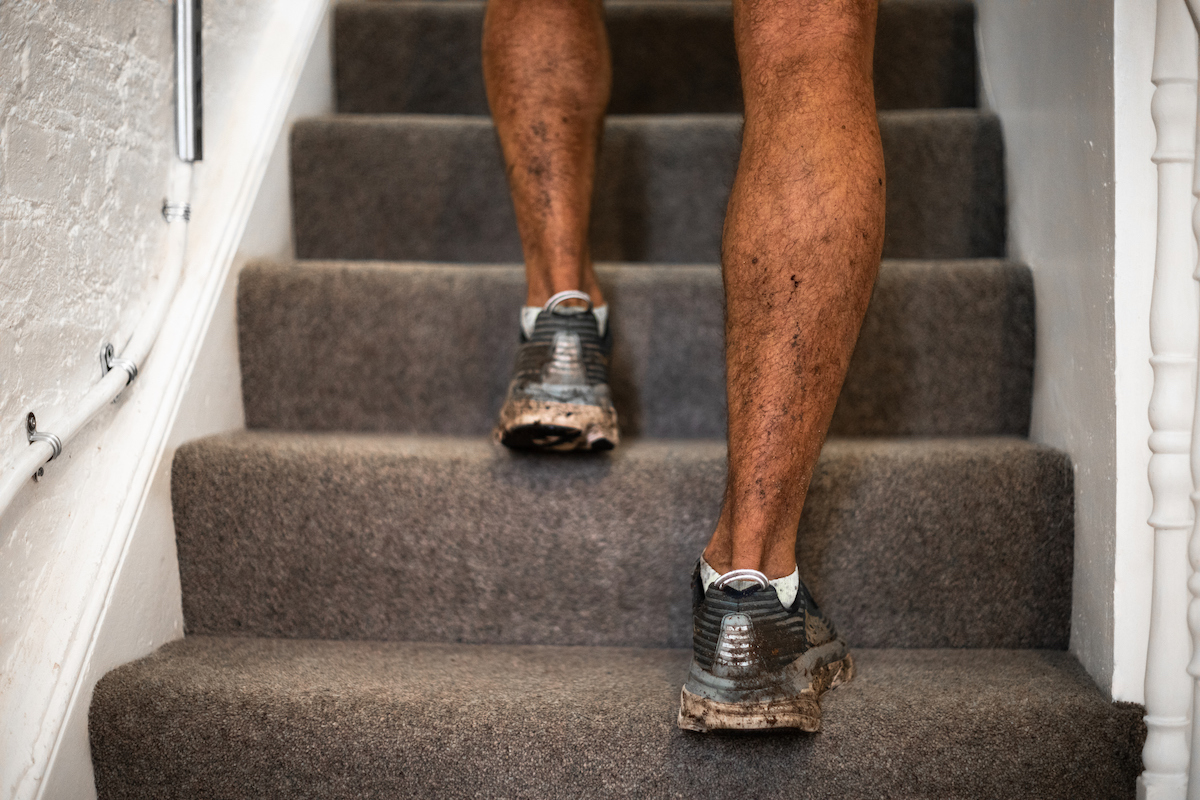
Generally speaking, natural fibers such as wool are not as stain resistant as synthetics.
- Nylon carpets can absorb untreated spills or soiling, so a missed or untreated stain can take hold quickly. However, braided nylon carpets typically are treated with stain-protection technologies, which also can make them more moisture-resistant.
- Polyester carpet, which is made from recycled materials, usually will not absorb liquids, a bonus for stain resistance.
- Polypropylene, or olefin, materials are popular partly because their fibers dry quickly. This makes them more resistant to liquid stains (and mold and mildew) than other carpeting materials. The bad news is that the material is susceptible to oil stains, however, and is less durable than nylon.
Construction type also can affect soil resistance. For example, the twisted fibers of frieze-style cut-pile carpeting can hide dirt better than some other types. Berber carpet might show stains, but since soil stays near the surface, it is easier to clean before it can stain. Though a carpet’s color or pattern doesn’t inherently make the material more stain resistant, it might help hide stains better. Dark or multicolored carpet often is the best option for high-traffic areas like stairways.
Style
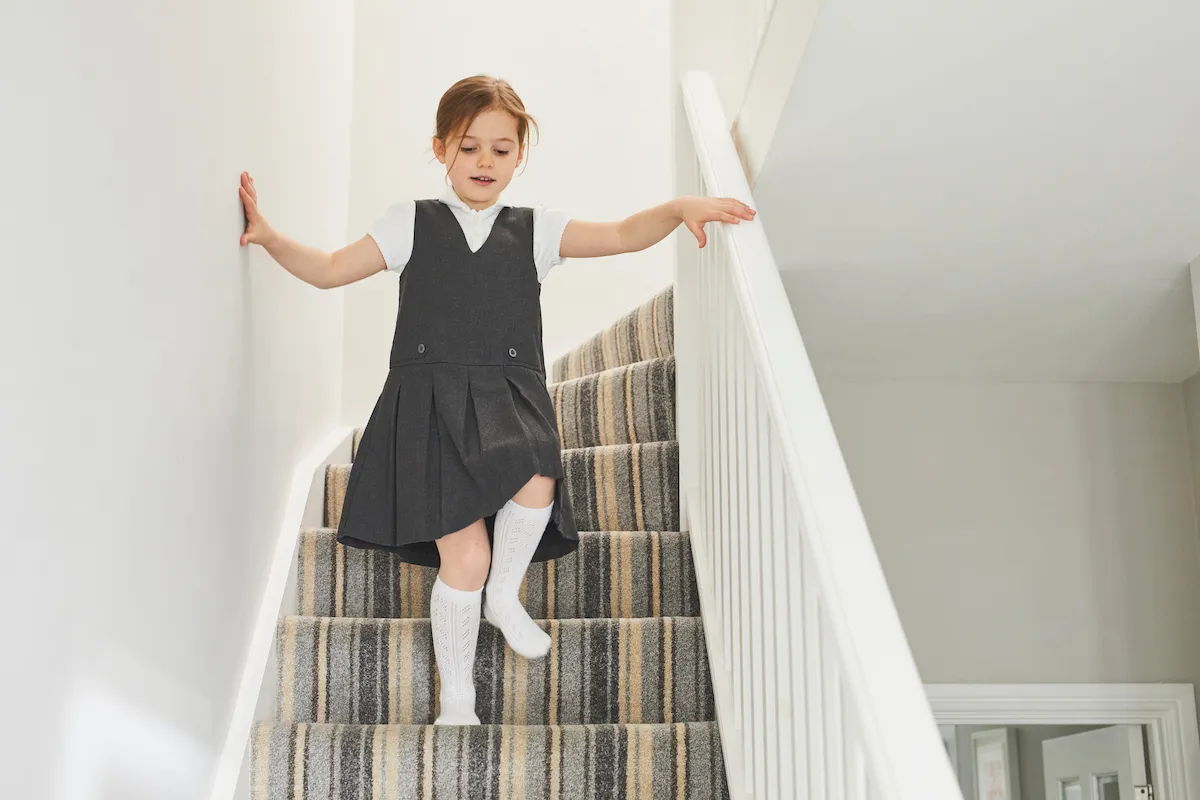
Although earthy, neutral, and light colors are among the latest carpet trends for stairs, consider how to complement the look of, say, a light gray or beige living room carpet with a coordinated darker or patterned stair carpet.
Designers use geometric patterns and dark colors as accents and to add visual interest. A popular option among carpet on stairs ideas is a striped pattern. Select and install patterns so they run vertically up and down the steps instead of horizontally. Bear in mind, though, that the stairs are probably not the place for a carpet with a pattern that will complicate installation. “Texture carpets are the easiest to seam, as there are no patterns or row variations to cause matching problems when piecing together an installation,” says Carter.

Carpet, hardwood, vinyl, and tile flooring.
Bob Vila has partnered with Empire Today to help you easily get beautiful new floors at a great price. Free In-Home EstimatesWarranty
Most quality carpeting manufacturers back their products with warranties. The most common is a carpet wear, or quality assurance, warranty, which covers deterioration of the fibers but not normal wear. Some warranties may require regular professional carpet cleaning to remain in force.
When shopping for stair carpeting, it’s important to ensure that the company’s warranty actually applies to stair carpeting and its installation. Be sure to do your research on what the warranty covers. For example, a stain and fade warranty might make sense for carpeting stairs, which will need to endure high foot traffic. Stairway carpeting also can lose its plushness and look crushed and worn. For stairs in particular, you might consider an installation warranty.
Consider the average life of the carpeting material and how long you plan to leave the carpeting on your stairs before you’re likely to remove or replace it. There is no need to pay for a warranty that’s longer than the lifespan of the material. Likewise, a warranty might not be worth the extra money if it does not provide the full protection guarantee you desire. Remember to keep all receipts from purchases, installation, and professional carpet cleanings, in the event that you have to make a claim someday.
How to Install Carpet on Stairs
Installing carpet on stairs is more complicated than flat-floor installation. As a result, it can be a costly line item of your overall carpet budget.
Whether you should DIY a stair carpeting install or call a pro to complete the job depends on how much experience you have installing carpeting. If you decide to go it alone, be sure to research tutorials for installing carpet that address the safety aspects of installing carpet on stairs.
Open stairs require a different approach to installation because they do not connect as typical stairs do, but appear to float. The best option typically is to look for stair treads that coordinate with your decor. These can help protect the stairs beneath and add traction.
There are two stair carpet installation styles that are “equally popular, in my experience,” says Carter: waterfall and Hollywood.
Waterfall
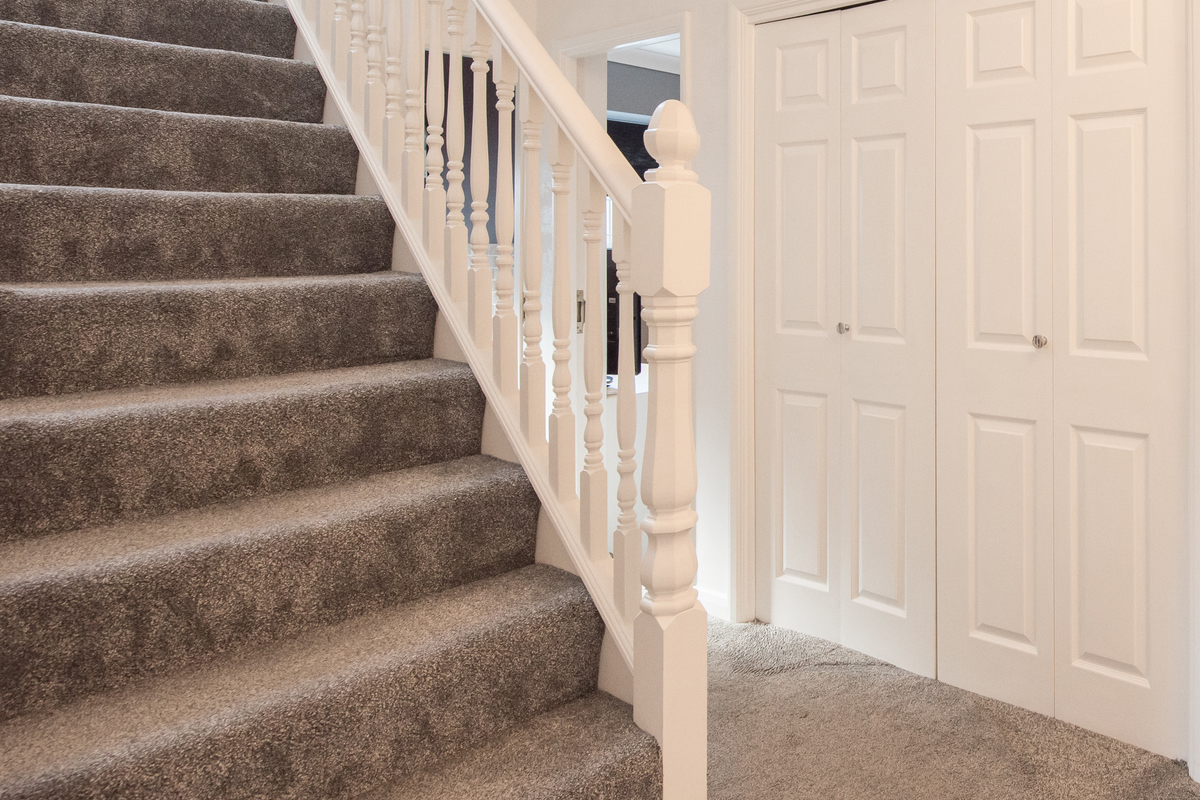
The waterfall style appears to cascade down the steps, much like the look of a stair runner. “Waterfall installs have the installer pull the carpet across the nose of the stair and attach it to the base of the next riser,” says Carter. This is the more traditional installation method and less expensive to complete.
Hollywood
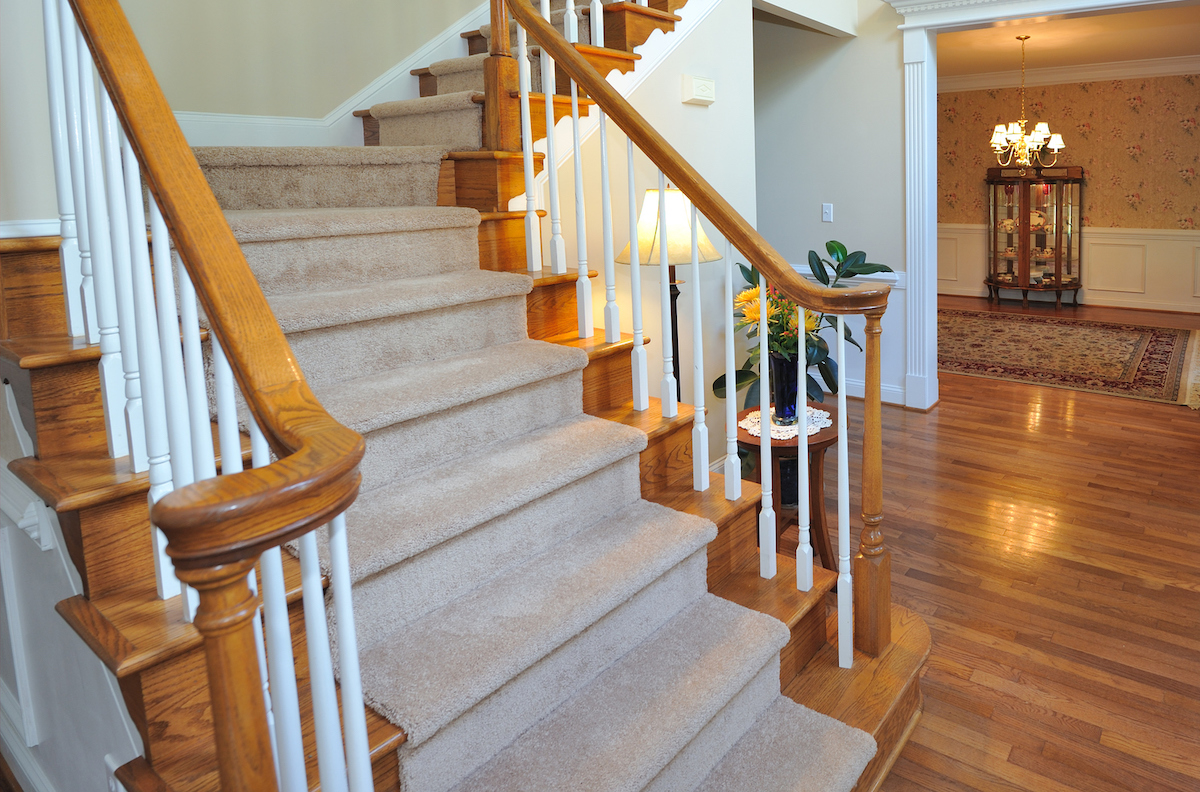
Also called “cap and band” installation, the Hollywood method has become more popular in the past few years. “The installer ‘wraps’ the nose of the stair tightly, conforming to the shape of the tread before following the riser to the next step. This results in a more ‘formal’ appearance,” says Carter. The Hollywood installation method requires more time and skill.
Finding the Right Carpet for Your Needs
Once you have an idea of the carpet construction and material you’re looking for, you can hone in on the carpet that best meets your needs. Consider how the carpet will enhance the appearance by selecting the color or pattern. But with stairs, factors like high traffic and safety factor into stair carpeting selection. How much these concerns matter to you depends on your lifestyle, who will use the steps most, and how long you plan to keep the carpet in place. Once you find the best carpet for your stairs, select a quality carpet installer to ensure the carpet fits snugly and looks good.
